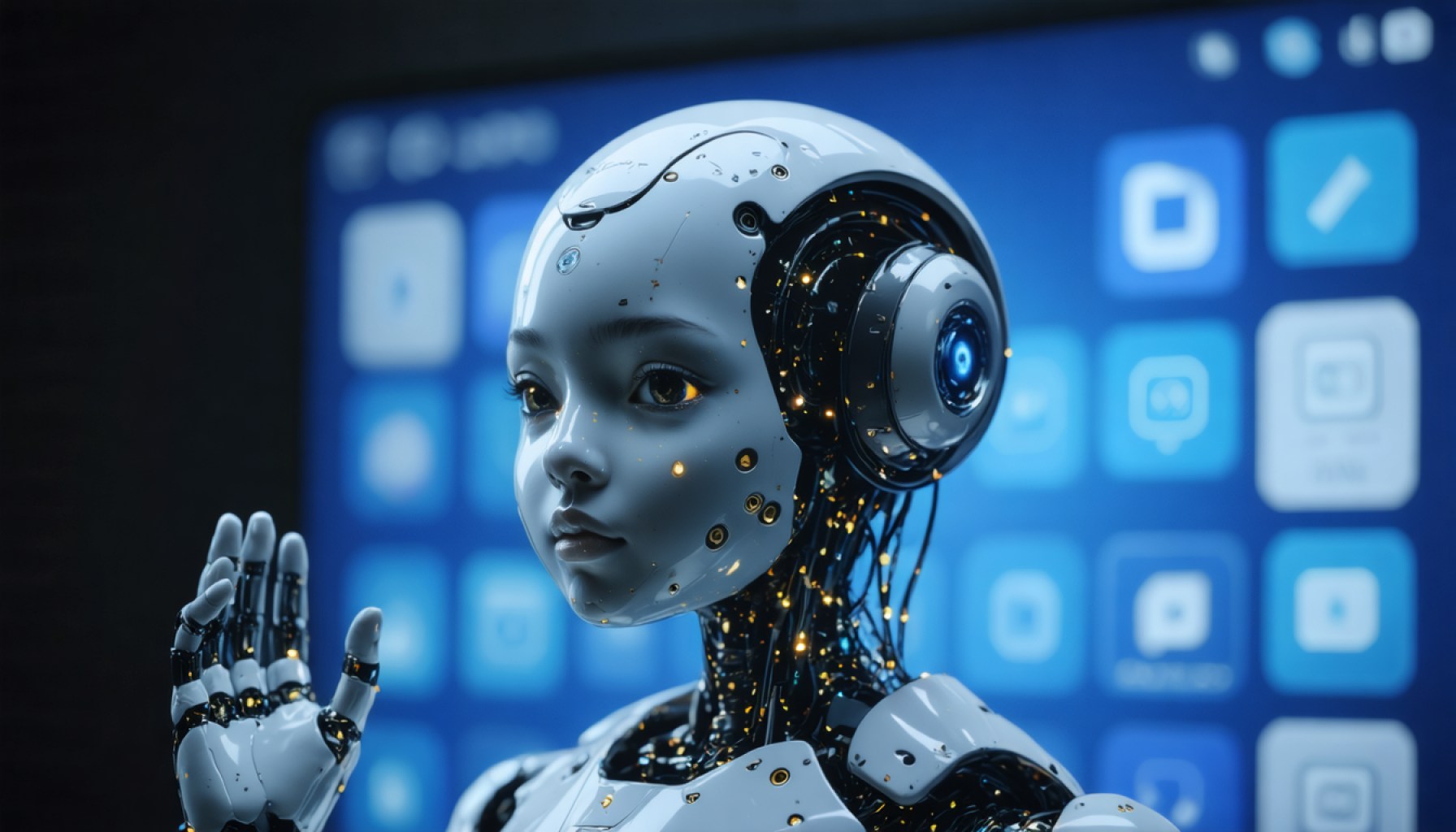- Signs is a cutting-edge platform that uses Nvidia’s technology to facilitate the learning of American Sign Language (ASL) through an interactive 3D avatar.
- The platform allows users to engage in ASL directly through their device cameras, providing intelligent feedback to enhance accuracy and learning.
- Currently incorporating 100 distinct signs, Signs aims to grow further by collaborating with skilled ASL speakers to expand its sign repository to 1,000.
- Signs fosters inclusivity and understanding, bridging communication between the hearing and deaf communities.
- The platform is designed to make learning ASL accessible via smartphones and tablets, transforming the learning experience into an engaging and personal journey.
- Ultimately, Signs is more than just a tool; it’s a bridge to inclusive dialogue, encouraging users to explore the rich language of sign language.
A shimmering leap forward in communication technology invites everyone to break through language barriers with signs, a groundbreaking platform powered by Nvidia. Imagine stepping into a classroom where the teacher never tires, gestures are crystal clear, and the feedback feels almost personal.
Signs unfolds as a virtual portal to the vibrant world of American Sign Language (ASL). A charismatic 3D avatar choreographs movements with precision, while users engage directly through their cameras. As hands move, the platform watches, gently nudging learners toward accuracy with its intelligent feedback.
Envision the accessibility—a brush of the fingertips across your phone or tablet initiates your journey, lighting up new worlds of connection for the hearing and deaf communities alike. This tool currently echoes with 100 distinct signs, but Nvidia dreams big. They’re rallying skilled ASL speakers, the native poets of hand movements, to enrich this repository. Each new contribution promises to blossom the AI’s lexicon, inching closer to a thousand treasured signs.
The mission transcends mere mimicry; it’s about fostering genuine understanding and fostering inclusive dialogue. The dance of hands, once limited by resources and reach, now pulsates with potential, offering an inviting path for those eager to learn and interact fluently.
Signs becomes more than a tool—it’s a bridge, a bold stride toward inclusivity, dissolving the silence for those ready to listen with their eyes and speak with their hands. This is not just a technological milestone; it’s an invitation to dive into the silent symphony of sign language, one gesture at a time.
Break Down Language Barriers with Nvidia’s Revolutionary ASL Platform
How Signs Works: Steps and Life Hacks
Using the Nvidia-powered Signs platform is a straightforward process designed to maximize accessibility and learning efficiency. Here’s a step-by-step guide:
1. Download and Install: Access the platform via your device’s app store or through Nvidia’s page to download the app. Ensure your device meets basic hardware requirements to support 3D animations.
2. Set Up Your Profile: Customize your learning journey by setting your proficiency level, enabling the platform to provide personalized feedback and suggestions.
3. Engage with the 3D Avatar: As you mimic the signs shown by the 3D avatar, keep your hands within the camera’s field of view. The avatar displays gestures with precision for you to replicate.
4. Receive Intelligent Feedback: The AI-powered feedback system offers real-time corrections and suggestions. Focus on understanding rather than mere mimicry to grasp the nuances of ASL.
5. Expand Your Lexicon: As you grow more comfortable, explore the additional signs that are periodically added by contributions from ASL experts.
6. Community Interaction: Join forums and community discussions to practice with other learners and native speakers, enhancing your skill through interaction.
Real-World Use Cases
– Educational Institutions: Implemented as part of modern educational curricula to offer inclusive education for hearing and deaf students alike.
– Workplace Accessibility: Enhances communication between colleagues in diverse working environments, promoting inclusivity.
– Global Connectivity: Breaks language barriers for travelers and expatriates in regions where ASL can serve as a common medium.
– Healthcare Communication: Assists in bridging gaps between medical practitioners and patients with hearing impairments.
Market Forecasts and Industry Trends
The integration of AI in language learning platforms is expected to grow significantly. According to a report by Forbes, the global online language learning market is projected to reach $21.2 billion by 2027. Platforms like Nvidia’s Signs will likely play a significant role, fuelled by increased demand for inclusive and interactive educational tools.
Reviews and Comparisons
While Signs provides a pioneering approach to ASL learning, similar platforms exist, such as Duolingo’s ASL course. Signs stands out with its interactive 3D avatar and personalized feedback mechanism. However, comprehensive reviews are still emerging as it gains traction in the market.
Controversies and Limitations
Despite its innovative approach, Signs is not without limitations. Current challenges include:
– Limited Sign Repository: With only 100 signs accessible at launch, users seeking advanced proficiency may find it insufficient.
– Hardware Compatibility: Requires relatively modern devices, which could limit access for some users.
Pricing and Features
While pricing details specifically for Signs are not publicly disclosed, platforms of similar nature often offer tiered subscription models. Key features include:
– Real-time feedback and interactive learning through a 3D avatar.
– Continuous updates with new signs.
– Community forums for collaborative learning.
Security and Sustainability
Nvidia ensures that user data is protected through encryption and privacy-focused policies. Sustainability efforts are part of Nvidia’s broader corporate responsibility initiatives, including reducing carbon footprint and promoting ethical AI use.
Tutorial Compatibility
Compatible with a wide range of devices, including smartphones, tablets, and laptops. The user-friendly interface eases navigation, making it accessible to diverse age groups.
Pros and Cons Overview
Pros:
– Real-time, personalized feedback.
– Encourages an inclusive learning environment.
– Innovative use of AI and 3D avatars.
Cons:
– Limited initial sign library.
– Requires up-to-date hardware.
Actionable Recommendations
– Immediate Practice: Dedicate 10 minutes daily to practice using the real-time feedback for incremental learning.
– Join Communities: Engage with online forums or local ASL groups for practical application beyond the digital platform.
– Keep Updated: Regularly check for updates to expand your knowledge with new signs and features.
For further learning, explore nvidia.com for insights into AI advancements and inclusive technologies.
Embrace this innovative path to learning ASL and become part of a global movement toward linguistic inclusivity.











